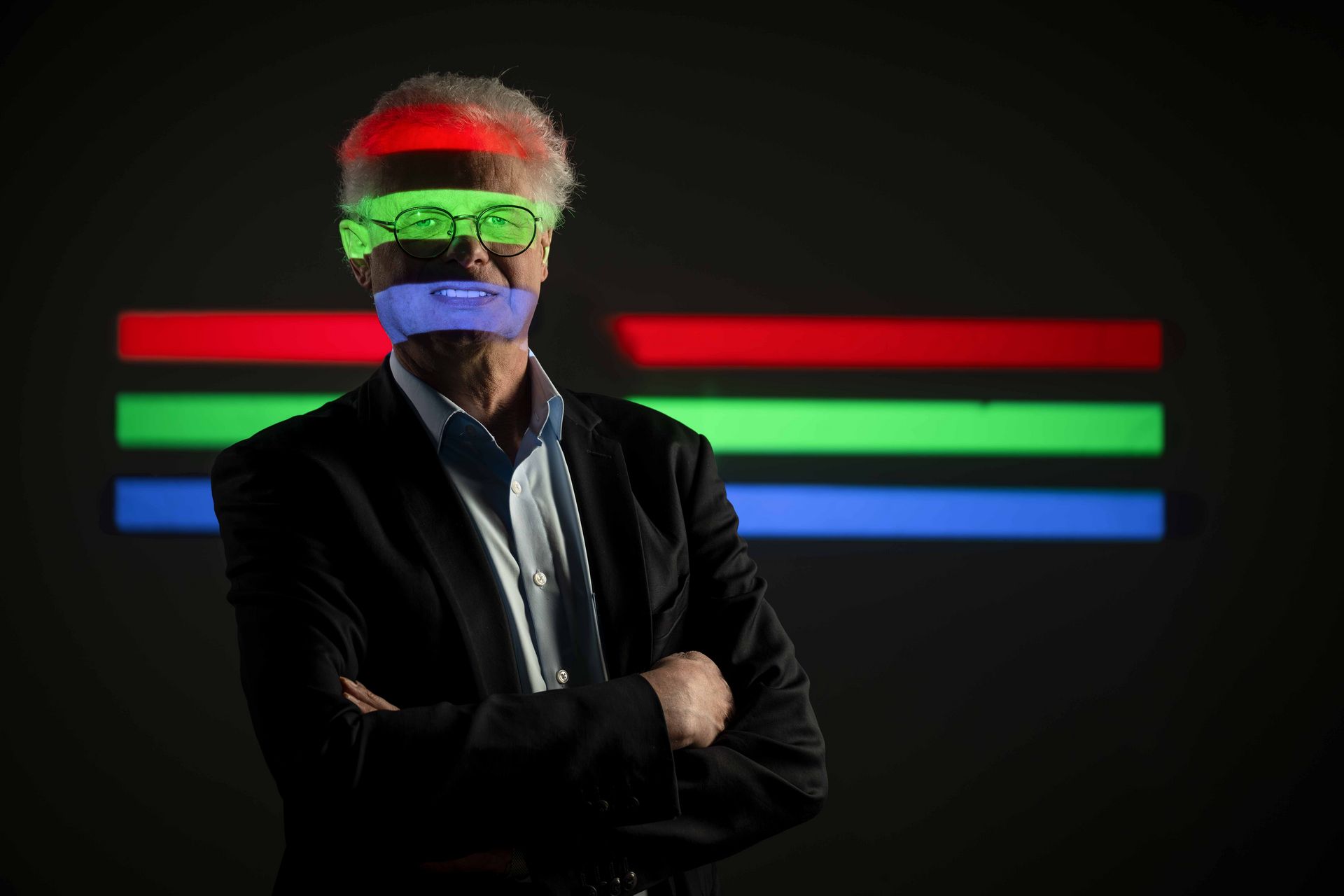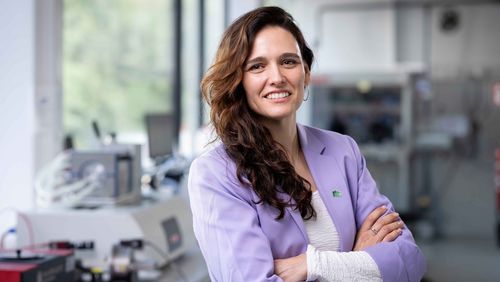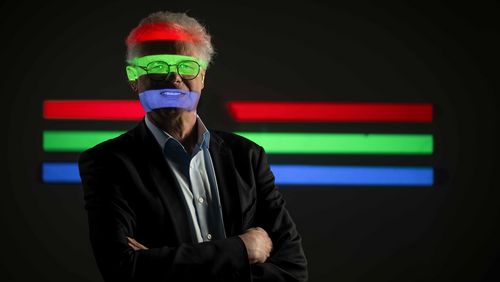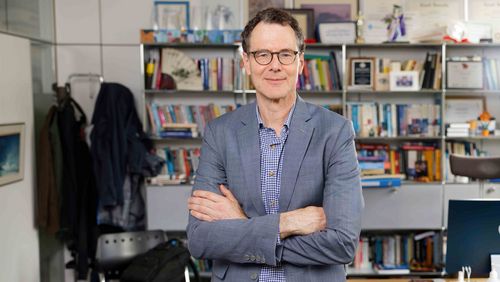
On first-name terms with photons
Professor Peter Seitz figures on the prestigious “Photonics 100” list for 2025—by far not the first honour bestowed on the long-standing member of the Scientific Advisory Board of the Werner Siemens Foundation.
Three years ago, science journal Electro Optics began creating an annual list of the one hundred most influential and innovative minds in the field of optics and photonics. Among the jury picks for 2025 is Professor Peter Seitz, long-standing member of the Scientific Advisory Board of the Werner Siemens Foundation (WSS).
Peter Seitz says he was naturally pleased to learn his name was on the list, but adds, “At the same time, I was a little uncomfortable. I felt I may have robbed an early career researcher of an opportunity. The prize gives me a sense of satisfaction, of course, but I’m nearing the end of my career. A younger talent would have benefited from the award.”

“Small Nobel Prize in engineering”
Seitz has received numerous other scientific awards over the course of his career—indeed, the engineer, physicist and professor emeritus at the École polytechnique fédérale de Lausanne (EPFL) has won some twenty prizes for his work. The most important recognition was the Grand Prize of the European Commission’s Information Society Technology in 2004, endowed with 200,000 euros and at the time considered as a “small Nobel Prize in engineering”.
Seitz relates how that particular award-winning development was the product of a colleague’s suggestion. The starting point was LiDAR technology, a method for using laser to determine ranges. For instance, light pulses can be used to calculate the distance from the Earth to the moon to the nearest centimetre: a mirror on the moon reflects light from laser pulses back to Earth, and the distance is determined by measuring the time it takes for the light to return. “A colleague asked me whether an imaging technique could be used to make these measurements —so that each camera pixel separately measures a returning light pulse,” Seitz explains. No sooner said than done: Seitz and his team developed a 3D camera technology based on this principle.
“This invention was the start of what is known as Imaging LiDAR,” Seitz says. In the meantime, the technology has found widespread application, for instance in distance sensors for cars. LiDAR technology, which is based on the wavelength of light, is more accurate than radar technology, which is based on radio waves. “But it’s currently more expensive. So it’s only used in the manufacture of luxury cars.”
World records in accuracy
Peter Seitz has never had a problem coming up with new ideas—or with integrating these fresh impulses into diverse research fields. One such field is optical coherence tomography (OCT), where he and his teams hold world records for accuracy. OCT takes advantage of interference—superimposed waves—to measure distances using specific light sources. “Today we can precisely measure distances down to the nanometre—a millionth of a millimetre—from a distance of a few centimetres,” Seitz says.
Heliotis, a start-up in the canton of Lucerne that he co-founded, works with this method, and clients include major manufacturers in the watch, machine, motor, electric vehicle and semiconductor industries, says Seitz, who sits on the firm’s board of directors. Heliotis technology can be used to detect whether the parts of a watch are in precise alignment, whether a component of a motor has the right dimensions or whether all parts on a printed circuit board are positioned to perfection.

10 start-ups, 75 patents
Seitz has co-founded no less than ten start-ups, and he has some seventy-five patents to his name. It’s an unusually high amount for a researcher, as he says. And it’s exactly what he had dreamed of as a child: “Lots of kids want to be a pilot or a bus driver when they grow up. I wanted to be Gyro Gearloose.” And just like the Disney comics character, Seitz always wanted to invent something a little mad but nonetheless useful.
His trajectory towards a career as Gyro Gearloose began at ETH Zurich, where he studied physics and received his doctorate in biomedical engineering. “I’m an engineer-physicist.” I want to understand the physics behind a phenomena with the aim of becoming a better engineer,” he says. In this regard, he ascribes to a maxim sometimes attributed to Einstein: “There is nothing more practical than a good theory.” This underlying conviction is also reflected in how Seitz united basic and applied research, product engineering and entrepreneurship over the course of his career. “I always had at least three jobs at the same time.”
For example, Seitz took on various roles as research leader at the Swiss Center for Electronics and Microtechnology (CSEM) while he also held a professorship, first at the University of Neuchâtel, then later at EPFL. “Alongside these positions, I was also busy with my start-ups and was vice president at Photonics 21 in Brussels, the largest European public-private partnership, and at the Swiss Academy of Engineering Sciences SATW.” He continues to act as vice president at SATW.
Ask, ask—and ask again
What qualities most helped Peter Seitz make his various inventions? He first names his broad academic background. “I never got stuck on one particular technology. Rather, I’m a bit of a jack of all trades who has explored many different areas of physics and engineering sciences. That has really paid off, because it helps me see possibilities that others overlook.”
The second quality he names as essential for innovation is absolute honesty. “If you don’t understand, you have to ask, again and again, until you get to the root of the problem.” When working for the Japanese company Hamamatsu Photonics, he learned about Sakichi Toyoda, the founder of Toyota Industries, which later became the Toyota Motor Corporation. “Toyoda said it’s possible to solve any problem by asking “why” five times. After the fifth time, you’ll give yourself an honest answer.” Seitz says this method of asking, and questioning himself has enabled him to push boundaries, to go beyond what had previously been possible.
Optical diagnostics
As one of the names on the Photonics 100, Peter Seitz is also looking to the future of his field. For instance, he sees great potential in integrated optics. Today’s optical devices like binoculars, have rather clunky mechanical parts with their lenses, mirrors and prisms. By contrast, integrated optics technologies aim to consolidate novel optical elements on tiny, three-dimensional spaces—similar to electronic chips.
The method could prove invaluable in medical diagnostics, to name just one possible application. “Thanks to fast and precise three-dimensional measurements, integrated optics can enable blood tests to be conducted through the skin,” Seitz says. There are already start-up companies drawing on this principle to continuously measure blood glucose levels in people with diabetes. “In short, we could live healthier, longer lives—all thanks to photons,” he says. It’s clear that Peter Seitz is and remains fascinated by the power of photons.



